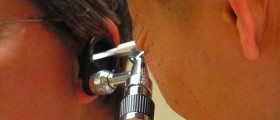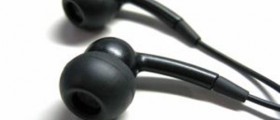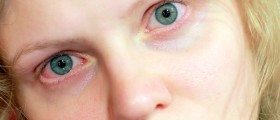Outer Ear
Outer ear is part of the ear which plays an essentially important and basic role in the sense of hearing, and it is the visible part of the hearing system, which could be spotted from the outside. Its function is to collect the sounds from the environment and there is the tube, called the ear canal, which ends in the eardrum, through which those sounds flow into the auditory system.
Outer Ear Infection
The most common ailment of the external part of the ear is the infectious process which usually happens because of the entrance of bacteria or fungi from the environment. More often than in the air, these germs can be found in high concentrations in the water or, to be more exact, in the impure waters of public pools, and that is why the individuals who swim more often, are more likely to be affected by this condition. So, this problem is very common and it is, fortunately, easily treatable, mostly because the external part of the ear is more reachable, logically.

The most prominent indicator of the infectious process of this part of the auditory system is the swelling on the surface of the mentioned tube, which is, in most cases, acute. Besides the pressure of the swelling, there is also intense and sharp pain as the most pointed out indicator of the bodily response to the infection and inflammation. Additionally, very uncomfortable is the sensation of the damaged ability to hear.
The most important thing is that these signs are intense and usually do not last longer than a period of 48 hours, except in cases when the condition is not treated. So, if the condition is neglected and left to advance, the discomfort and the irritation also tend to prolong. This is dangerous because, in the case of the chronic condition, there is no pain to appoint to the urgency of treating the problem.
- Pseudomonas aeruginosa and Staphylococcus aureus are the most common pathogens involved in otitis externa. Otitis externa can also occur as a polymicrobial infection, and rarely, it may result from a fungal infection such as Candida or Aspergillus. Various factors can predispose patients to the development of OE.
- Otitis externa is a common condition and can occur in all age groups. It is uncommon in patients younger than 2 years old. Its incidence is unknown, but it peaks around the age of 7-14. Approximately 10% of people will develop otitis externa during their lifetime, and the majority of cases (95%) are acute. There is no gender predominance. The majority of cases occur during the summer and in tropical climates; it is possibly related to increased humidity.
- The external auditory canal is covered by hair follicles and cerumen-producing glands. Cerumen provides a protective barrier and an acidic environment that inhibits bacterial and fungal growth. The inflammatory response in otitis externa is believed to be caused by a disruption of the normal pH and protective factors within the auditory canal. This includes a sequential process of damage to the epithelium, loss of protective wax, and accumulation of moisture that leads to a higher pH and bacterial growth.
- Otitis externa is a clinical diagnosis. Routine laboratory testing and/or ear canal cultures are not necessary or indicated for uncomplicated cases. However, cultures are recommended for recurrent or resistant cases of otitis externa, particularly in immunocompromised patients. For patients with severe symptoms, blood glucose and human immunodeficiency virus (HIV) testing may be considered.
- In general, antibiotic otic drops are safe and well-tolerated. Their safety and efficacy compared to placebo have been proven with excellent results in randomized trials and meta-analyses. Some studies have shown that topical antibiotic drops containing steroids may decrease inflammation and secretions, and hasten pain relief. Regardless of the topical antibiotic used, approximately 65% to 90% of cases will have a clinical resolution within 7 to 10 days.
- Patients treated with antibiotic/steroid drops can expect symptoms to last for approximately 6 days after treatment began. In many cases, OE will resolve spontaneously in the acute period. However, acute episodes may recur; the risk of recurrence is unknown. There is a potential for hearing loss and canal stenosis from chronic inflammation, which may occur with a single acute OE episode.
The Treatment
The conventional and any other treatment is based on certain beneficial substances which are designed to be administered through the ear tube in the form of drops. Those are the steroidal drugs (which successfully lessen the swelling and the pain, dealing with the consequence), the medications that annihilate bacteria (which effectively deal with the cause of the infection), or the aluminum acetate (which is the substance that makes the surfaces dryer).
Putting the drops into the ear canal is, naturally, the most effective way to safely apply the medication or remedy over the swollen surface. At this point, it is important to emphasize that, during the treatment, the affected individual should restrain him or herself from any activity in the water.














-Arthritis_f_280x120.jpg)


Your thoughts on this
Loading...